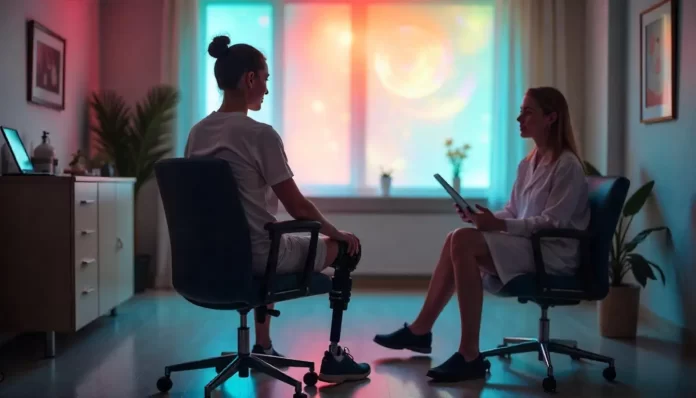The intriguing world of psychedelics is gaining attention not just for its psychological effects but also for its possible role in pain management. As noted in recent observations from the University of California, San Diego (UCSD), researchers are investigating whether psilocybin, a compound found in psychedelic mushrooms, can provide relief for those suffering from phantom limb pain. This chronic condition affects many amputees, posing significant challenges due to its elusive nature and the lack of effective treatment options.
Understanding phantom limb pain
Phantom limb pain manifests as feelings of discomfort or pain in a limb that has been amputated. Despite the physical absence of the limb, individuals often experience sensations as if it were still attached and functional. Estimates suggest that between 60% and 80% of amputees grapple with this condition at some point, making it a prevalent issue within this community.
This pain is not purely physical; it intertwines with psychological elements, possibly linked to traumatic memories associated with the amputation process. Understanding the origins and mechanisms behind such pain remains complex, which leads to difficulties in crafting universal treatments.
The UCSD study: a new perspective on treatment
In an innovative approach, UCSD undertook a clinical trial to explore how psychedelics could alleviate chronic pain. Fadel Zeidan, a notable figure at UCSD’s Center for Psychedelic Research, spearheaded this initiative. His work marked the first randomized controlled trial examining the impacts of psychedelics specifically on chronic pain conditions.
During the trial, participants were divided into two groups: one received a dose equivalent to four or five grams of dried psilocybin mushrooms, while the other ingested niacin, serving as the placebo. Those consuming niacin only reported temporary pain reduction, experiencing a return of symptoms a few weeks later. On the other hand, participants exposed to psilocybin described more sustained relief.
An insight into brain activity and pain perception
One of the most fascinating outcomes of the study involved analyzing participants’ brain activity. Decreased activity was particularly noticeable in neurological networks linked with self-esteem and personal identity, correlating with enhanced pain relief. The diminished focus on ego-centric thoughts appeared to contribute positively to the participants’ experiences.
This shift aligns well with historical insights shared by various indigenous cultures that have long recognized psilocybin’s capacity to alter perceptions and promote healing. The research emphasizes the connection between altered neural activities and emotional responses, offering a fresh lens through which chronic pain might be viewed.
The therapeutic role of transformative experiences
Psychedelic experiences often lead to profound personal insights, similar to the psychology concept of an “aha” moment. During these transformative episodes, individuals may realize new aspects of themselves or their situations, resulting in lasting changes in mental frameworks. Such shifts can sometimes alleviate feelings of depression and anxiety, common in those struggling with persistent pain.
This form of system reset, as outlined by Zeidan, offers hope for those whose lives are disrupted by chronic pain, suggesting that resolving emotional trauma might hold the key to reducing discomfort. These findings could reshape existing notions of pain management therapies.
Next steps in research and development
Although initial results from the small-scale UCSD trial showed promise, the extent of these benefits requires further exploration. Researchers aim to progress into a broader phase two trial involving a larger cohort—potentially up to 30 participants per group. Expanding the sample size could lend more weight to their observations, enabling more reliable conclusions.
By delving deeper into the implications, scholars like Zeidan seek not just to confirm psilocybin’s short-term effects on phantom limb pain but also to uncover ways in which these methods might transform chronic pain management more broadly.
Implications for future pain management strategies
If ongoing studies continue to showcase positive outcomes, psilocybin therapy might soon prompt paradigm shifts in how healthcare providers address chronic pain. Emphasizing personalized healing journeys that incorporate both physiological and psychological dimensions could offer comprehensive solutions that traditional methods overlook.
While the research continues to mature, integrating ancient wisdom and modern science suggests promising possibilities for addressing one of medicine’s more stubborn problems. As understanding deepens, so too does the potential for transformative changes in therapeutic practices.


